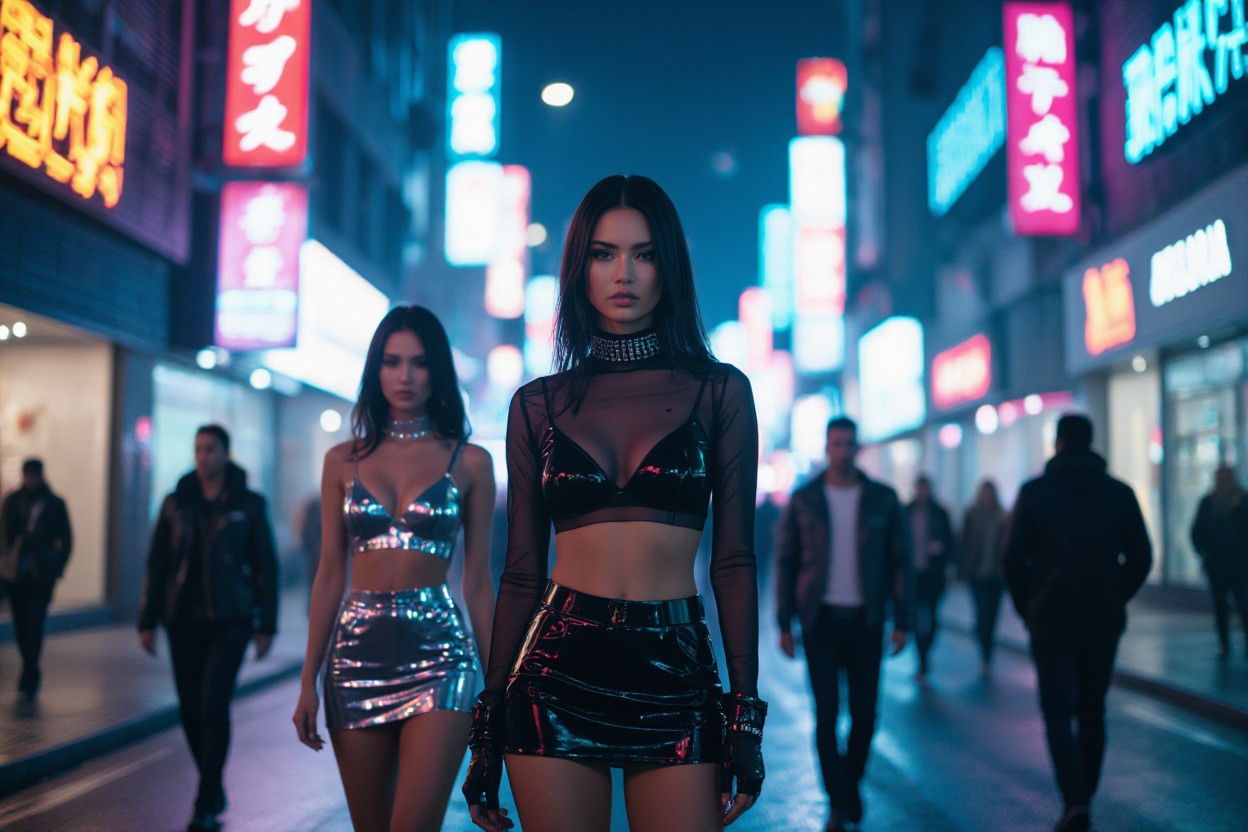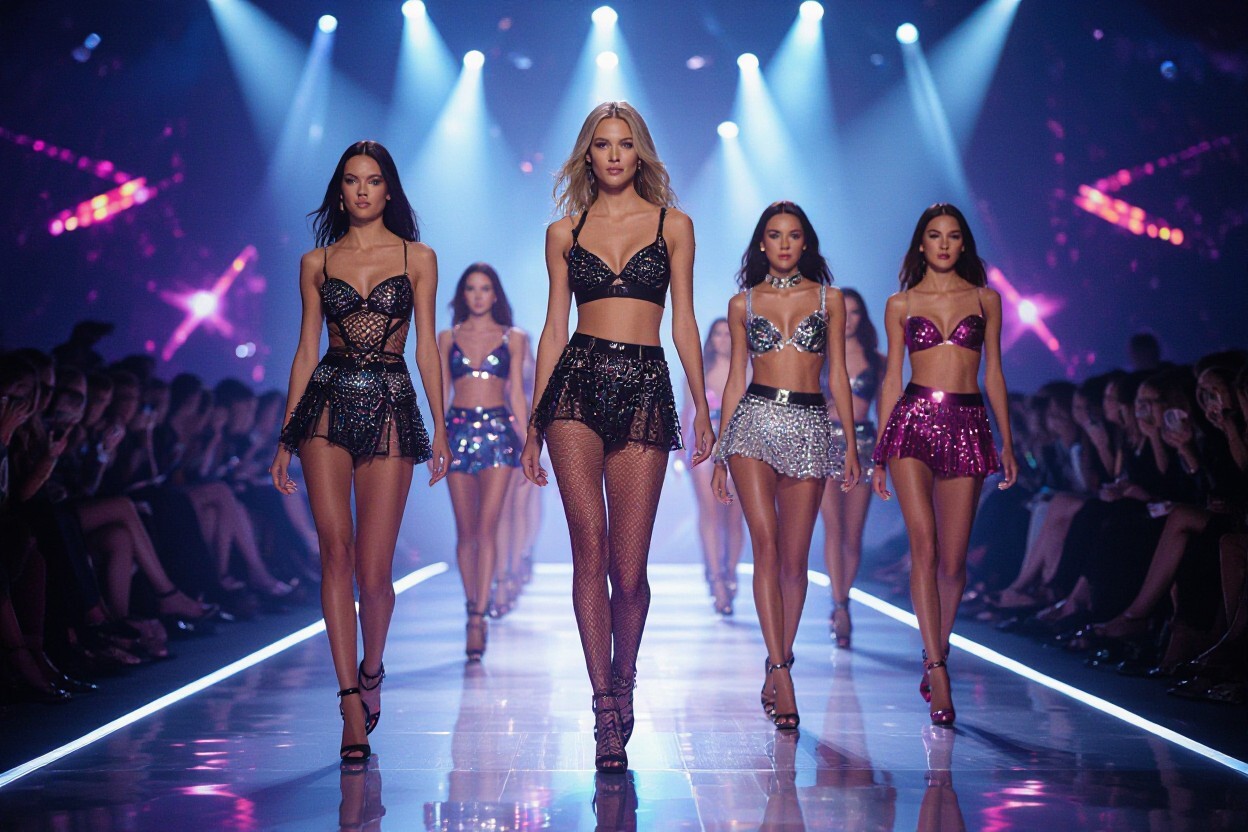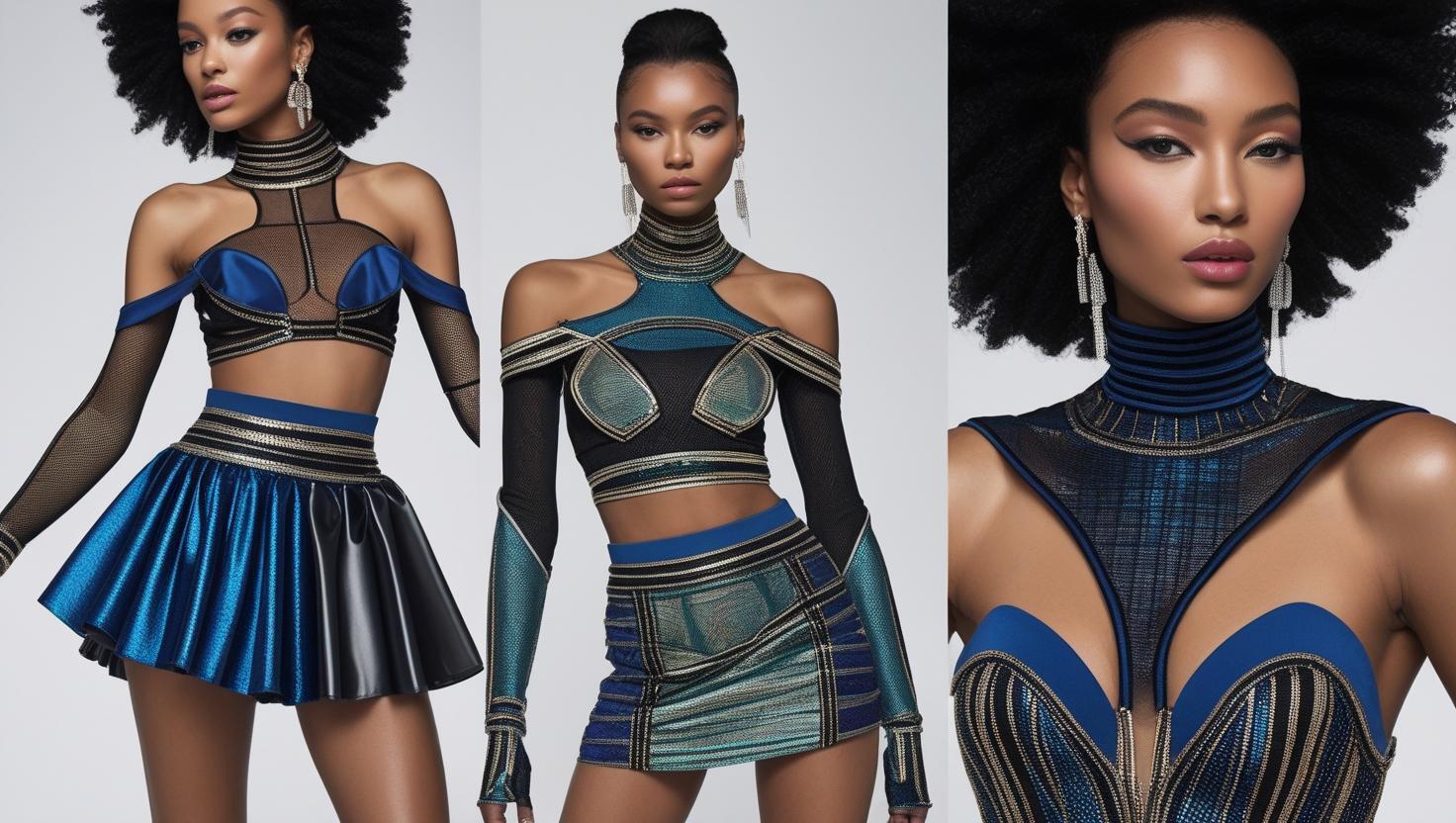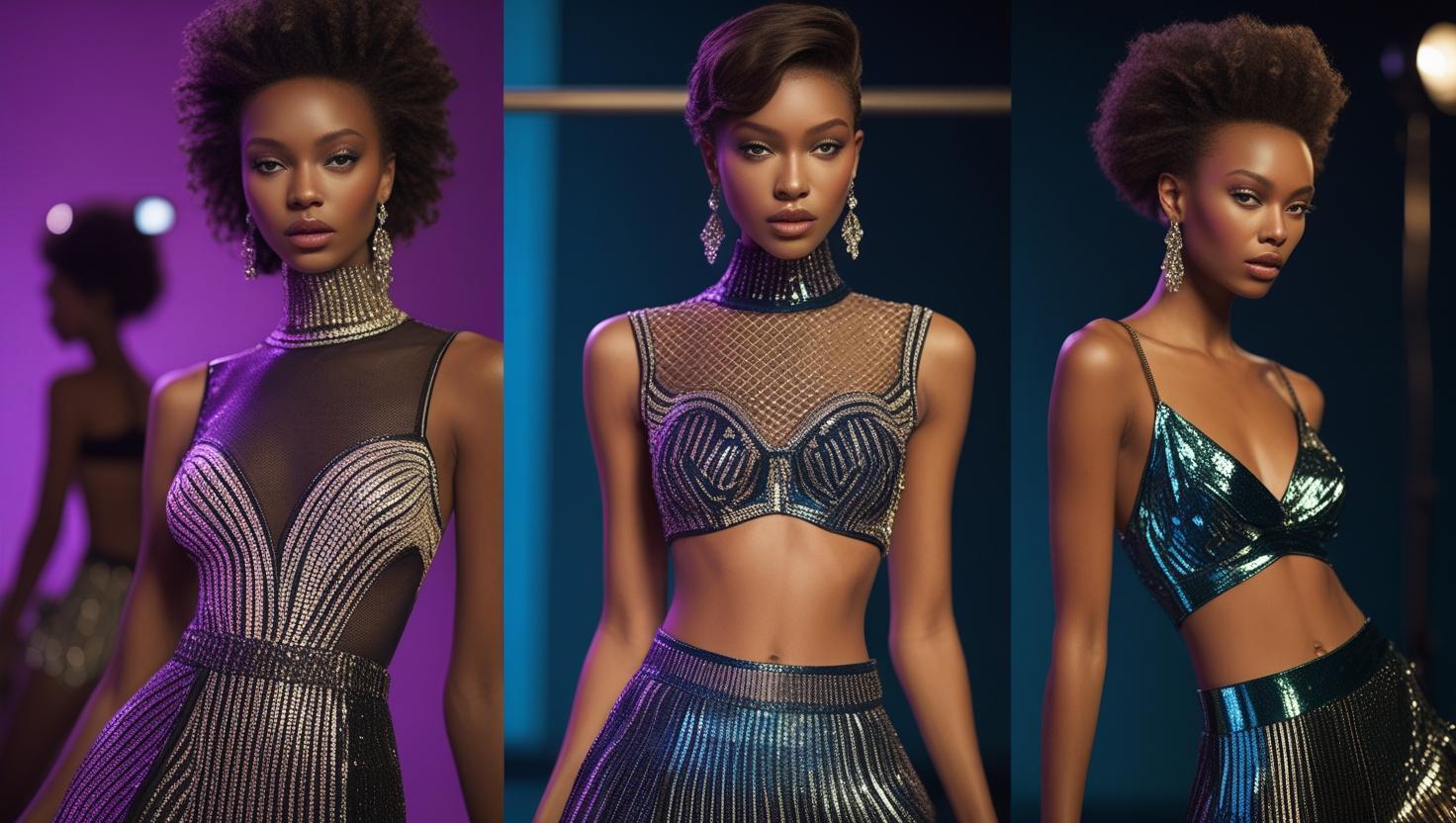19th Jul 2025
Clubwear Couture: Micro‑Minis, Mesh & Metallics Take Center Stage in 2025

You’re about to discover how micro-minis, sheer mesh, and shimmering metallics are shaping the future of clubwear in 2025. This trend not only pushes boundaries in style but also blends boldness with wearability, allowing you to express your individuality with confidence. As these elements dominate runways and nightlife alike, understanding their impact can help you make better fashion decisions and embrace daring looks that captivate attention while reflecting the evolving culture of nightlife fashion.

The Resurgence of Clubwear: Blending Function with Fashion
Clubwear has re-emerged as a pivotal style that merges bold aesthetics with practical wearability. You’ll notice that brands like Namilia expertly balance provocative designs—like thigh-high boots and leather chaps—with technical durability, ensuring garments withstand marathon nights out. This revival prioritizes high-performance fabrics and functional details such as triple-top stitching, offering both statement looks and longevity. As nightlife culture evolves, clubwear's ability to combine sartorial edge with real-world resilience makes it an indispensable influence on contemporary fashion.
Historical Context: The Evolution of Clubwear Styles
Clubwear originated in the underground scenes of the 1970s and 80s, evolving alongside disco, rave, and house music cultures. Its roots lie in self-expression and community, reflected in micro-minis, mesh fabrics, and metallics that challenged mainstream norms. Over decades, clubwear oscillated between subcultural statements and high fashion appropriations, climaxing in the 2000s with designers blending streetwear and couture. This trajectory underpins today’s trend of marrying avant-garde designs with accessible, wearable silhouettes.
Cultural Relevance Today: How Nightlife Influences Design Trends
Nightlife remains a powerful catalyst shaping fashion’s direction, inspiring designers to craft collections that resonate with clubgoers' desires for visibility and safety. The prominence of queer, non-binary, and plus-size models at shows like Namilia’s AW24 highlights the scene’s inclusivity. You see design elements reflecting the tension between bold self-expression and protection—like pepper spray-inspired accessories juxtaposed with sparkly mesh—capturing the complexities of nightlife experience in 2025.
Delving deeper, nightlife culture demands versatility and empowerment, fostering innovation across textile technology and silhouette engineering. You’ll find garments infused with stretchy, durable materials designed for 48-hour wear, accommodating non-stop dancing and socializing. DJs and music celebrities frequently drive demand for custom stagewear that blends spectacle with comfort, evident in collaborations with brands like Namilia and Khy. This symbiosis between nightlife and design continuously pushes boundaries, ensuring that clubwear adapts dynamically to cultural shifts while maintaining its rebellious spirit.
Key Trends Shaping Clubwear in 2025
Clubwear in 2025 is driven by fearless experimentation, blending avant-garde aesthetics with functional design. Expect bold silhouettes like micro-minis, skillful use of mesh to build layers that play with transparency, and an explosion of metallic textures dominating the scene. These trends reflect a desire for self-expression balanced by practical considerations—such as durability and comfort—acknowledging the long nights spent dancing and socializing. They also mirror cultural shifts embracing inclusivity, protection, and visibility within nightlife fashion.
Micro-Minis: Embracing Bold Silhouettes
The micro-mini reclaims its place as a statement piece, with you pushing boundaries through ultra-short hemlines paired with structured corsetry and exaggerated shoulders for dramatic proportion. Namilia’s collections illustrate how these provocative shapes merge playfulness with empowerment, inviting you to own your visibility while navigating spaces that demand both flair and resilience.
Mesh Mastery: The Art of Layering and Transparency
Mesh fabrics redefine layering as you combine transparency with texture, sculpting looks that reveal and conceal. Sparkly mesh paired with camouflage or leather contrasts not only heightens visual impact but conveys layered identity, perfect for expressing complex narratives while maintaining wearability on the dance floor.
Diving deeper, mesh serves as a versatile canvas enabling you to mix softness and edge. Techniques such as multi-layered mesh overlays create depth and motion, while strategic cutouts reveal glimpses of skin or undergarments, drawing focus without overexposure. Namilia’s designs often integrate mesh with durable, stretchy textiles reinforced by triple-top stitching, ensuring your outfit endures the rigors of extended nights. This texture interplay supports both aesthetic intrigue and functional durability, making mesh mastery crucial in contemporary clubwear.
Metallic Madness: How Shiny Textures Dominate the Scene
Metallics surge forward as a defining trend, with you incorporating shimmering fabrics that catch light from every angle. Faux leather with painted edges and etched details elevates classic clubwear staples to luxe, high-performance pieces designed to stand out in vibrant nightlife settings.
Exploring metallic textures further, you witness enhanced production techniques delivering finer details and durability. Namilia’s higher-quantity runs for collaborations like Khy allowed meticulous edge-painting and etching that mimic real leather’s tactile richness. These nuances turn metallics into signature elements that not only gleam but also withstand intense wear. The result is clubwear that blurs lines between couture and costume—reflective, bold, and built for lasting impact.
The Role of Celebrity Collaborations in Clubwear's Popularity
Celebrity collaborations have accelerated clubwear’s rise from niche scenes to mainstream spotlight. When stars endorse or co-create collections, you tap into vast fanbases hungry for exclusive, edgy pieces. These partnerships not only amplify brand visibility but also translate into rapid sales growth and cultural relevance. The crossover appeal between music, nightlife, and fashion becomes a powerful engine for clubwear’s ongoing evolution, enhancing its status as both a lifestyle and a statement.

Case Study: Namilia and Kylie Jenner's Impact
Namilia’s 2023 collaboration with Kylie Jenner’s Khy brand dramatically expanded its global reach. Selling nearly half of its 12-piece faux leather drop shortly after launch, the partnership granted Namilia increased legitimacy and awareness beyond its underground roots. Jenner’s polarizing profile sparked debate but undeniably amplified Namilia’s commercial potential, opening doors for future high-profile collaborations and reinforcing the synergy between celebrity power and clubwear innovation.
Influencers and Icons: Shaping the Aspirational Aesthetic
Influencers and cultural icons sculpt clubwear’s aspirational image by wearing and promoting pieces that blend boldness with personal expression. Figures like Cardi B, Megan Thee Stallion, and Paris Hilton have worn Namilia, transforming provocative designs into mainstream must-haves. Their visible endorsements create demand, validate the style’s edginess, and elevate clubwear from backstage costumes to street style staples.
Beyond just visibility, influencers inject narratives into clubwear that resonate with diverse audiences. Their use of inclusive runway looks and distinct subcultural signifiers fosters a sense of belonging and empowerment. By filtering avant-garde silhouettes through their personal brands, these icons continuously renew clubwear’s relevance. Through social media amplification, you’re not only witnessing fashion trends but participating in a dialog about identity, community, and rebellion crafted by influential tastemakers.
Sustainability Challenges in the Clubwear Sector
Clubwear faces complex sustainability hurdles due to its reliance on synthetic materials and intricate production techniques designed for performance and durability. Balancing the sector’s demand for bold, high-impact aesthetics with environmental responsibility is difficult, especially as petrochemical-based fabrics remain pervasive. Limited infrastructure for recycling and the energy-intensive manufacturing processes only compound these challenges, leaving you to weigh the trade-offs between style innovation and ecological impact.
Material Choices: Navigating the Debate between Aesthetics and Environment
Synthetic leather, favored by many clubwear brands like Namilia, offers stretch and durability necessary for stagewear but involves fossil fuel–derived petrochemicals. While vegan alternatives gain praise, their environmental footprint is under scrutiny. Natural leathers raise their own concerns, from resource intensity to ethical debates. Finding or developing materials that deliver dramatic looks and performance without amplifying environmental harm remains a tightrope walk for your brand’s responsible innovation.
Innovations on the Horizon: Sustainable Solutions for Clubwear
Emerging technologies in bio-based materials and recycled fibers promise new pathways for sustainably crafting clubwear’s bold aesthetics. Startups are developing faux leathers from mushroom mycelium, cactus, and even lab-grown collagen, aiming to minimize petrochemical dependency. Meanwhile, advances in circular design and textile recycling could reduce waste streams. Embracing these innovations early positions you to reshape the clubwear narrative toward both high performance and lower environmental impact.
Bio-fabrication startups are steadily refining faux leather alternatives, such as Bolt Threads’ Mylo™ made from mushroom fibers and Desserto’s cactus leather, which use significantly less water and land than traditional leather. Recycled polyester blends derived from ocean plastics are also gaining traction, offering glossy finishes ideal for clubwear shine. On the manufacturing front, techniques like digital printing and zero-waste patterning lower material waste, while brands integrate take-back programs to support circularity. By tracking these advancements and partnering with innovative material producers, you can future-proof your collections and align bold design with sustainability goals.
Direct-to-Consumer Strategies: A Game Changer for Clubwear Brands
Driving nearly 80 per cent of sales through direct-to-consumer channels, brands like Namilia prove that owning your retail experience can fuel rapid growth and authentic customer connections. By sidestepping traditional wholesale hurdles—such as lengthy payment delays and high retailer cuts—you keep tighter control over brand narrative and pricing. Investing in infrastructure during downtimes, like the pandemic, allowed Namilia to build resilient logistics and dual shipping hubs in Berlin and the US, empowering you to scale globally while maintaining agility.
The Shift Towards Retail Autonomy: Benefits and Challenges
You gain unparalleled control over inventory, pricing, and customer data by embracing retail autonomy, which enhances agility in launching bespoke collections and reacting to trends. However, this independence comes with challenges like handling logistics, customer service, and marketing in-house, which demand investment and expertise. For Namilia, balancing these elements meant building strong supplier relationships and expanding their US presence to meet growing demand efficiently.
How Digital Platforms Reinvent Clubwear Accessibility
Utilizing digital tools transforms how you engage consumers worldwide—virtual storefronts break geographic barriers while personalized marketing targets niche communities. Namilia’s online presence connects with fans across continents, amplifying inclusivity by featuring queer, plus-size, and non-binary models to reflect its audience authentically, increasing loyalty and sales potential far beyond traditional boutiques.
Beyond global reach, digital platforms enable you to harness detailed analytics, refining collections based on direct consumer feedback and buying behavior. With agile e-commerce interfaces and social media synergy, brands like Namilia optimize inventory turnover and spotlight limited drops, fueling a sense of exclusivity and urgency. This data-driven approach ensures your clubwear resonates deeply with vibrant, diverse audiences while sustaining profitability.
Final Words
Hence, you can expect clubwear couture in 2025 to boldly embrace micro-minis, mesh, and metallics as defining elements of the style. These trends merge edgy aesthetics with expressive individuality, offering you pieces that stand out on and off the dance floor. By integrating these key materials and silhouettes into your wardrobe, you align with a fashion movement that celebrates both boldness and creativity, ensuring your looks are both modern and memorably vibrant.


